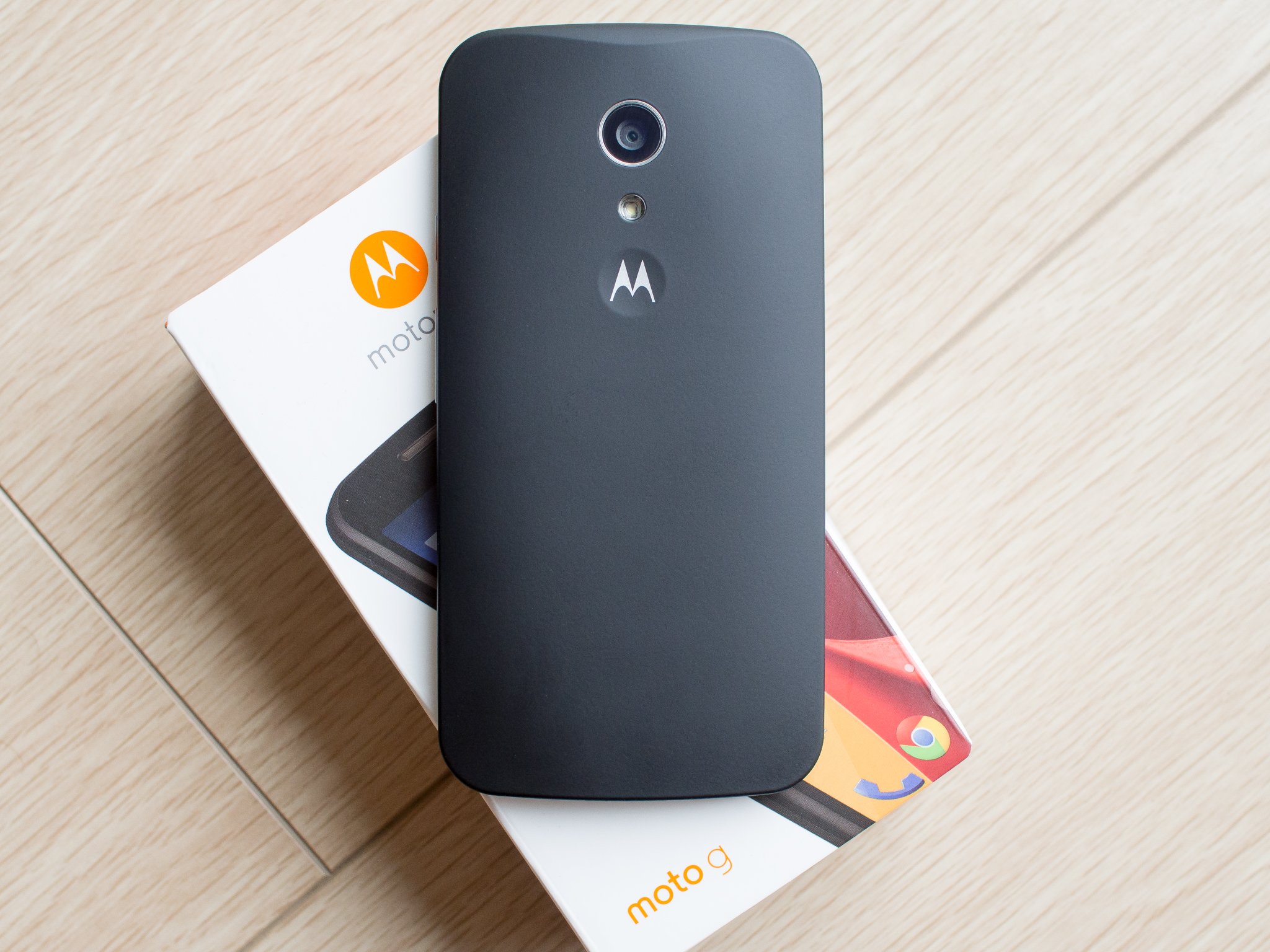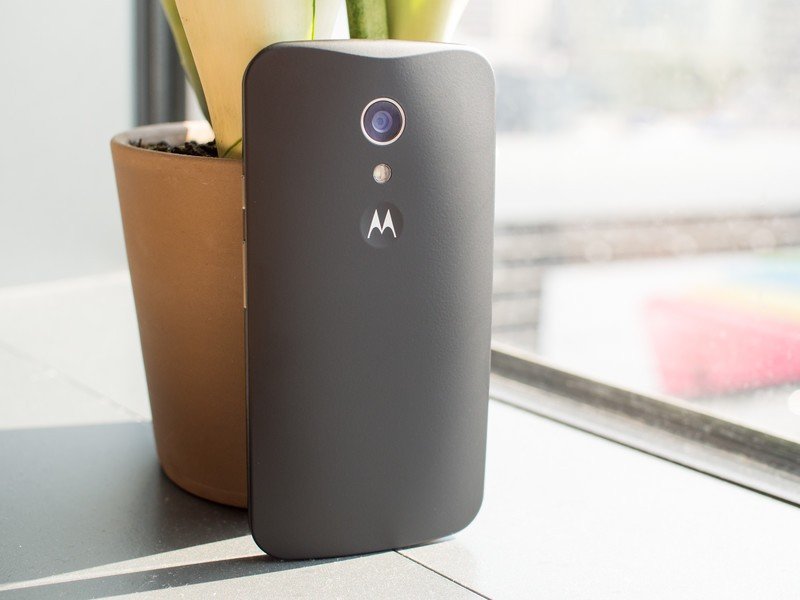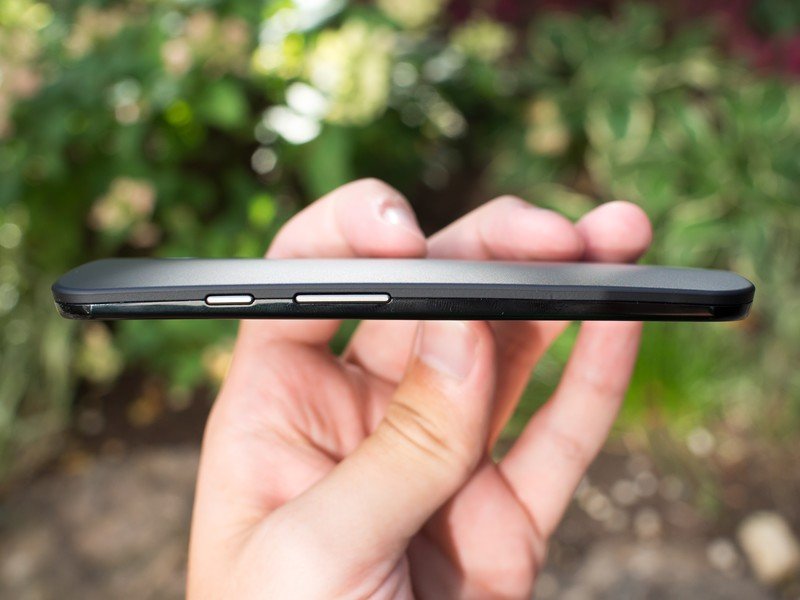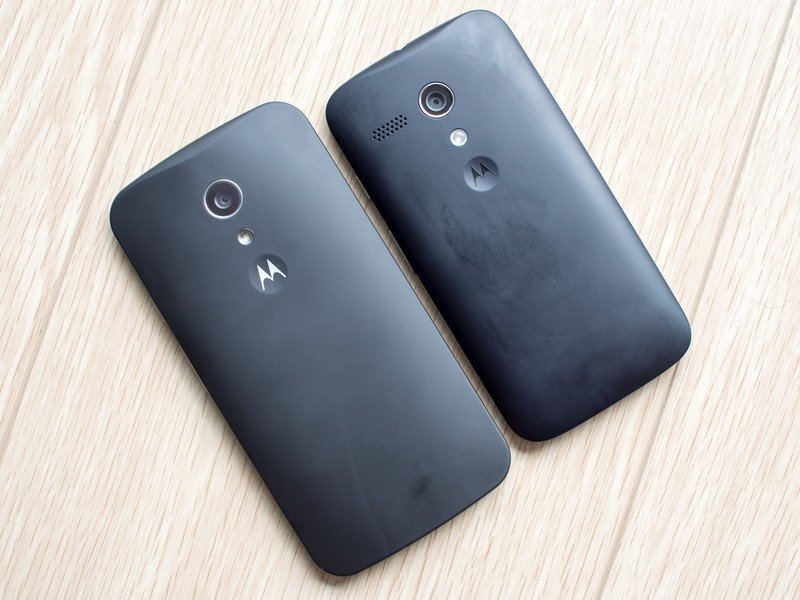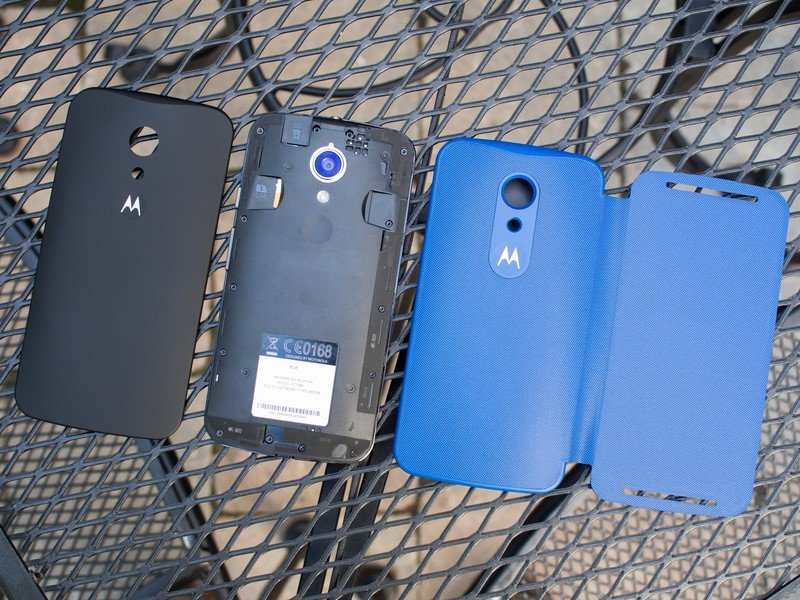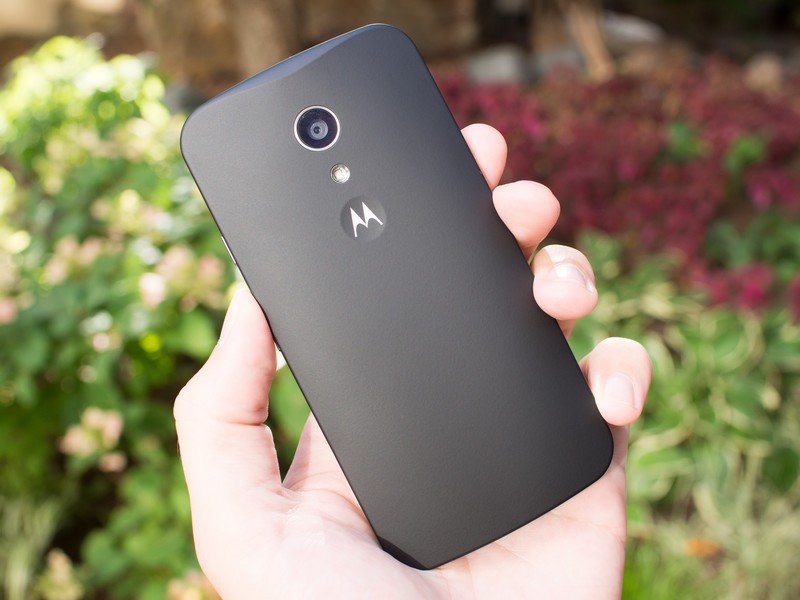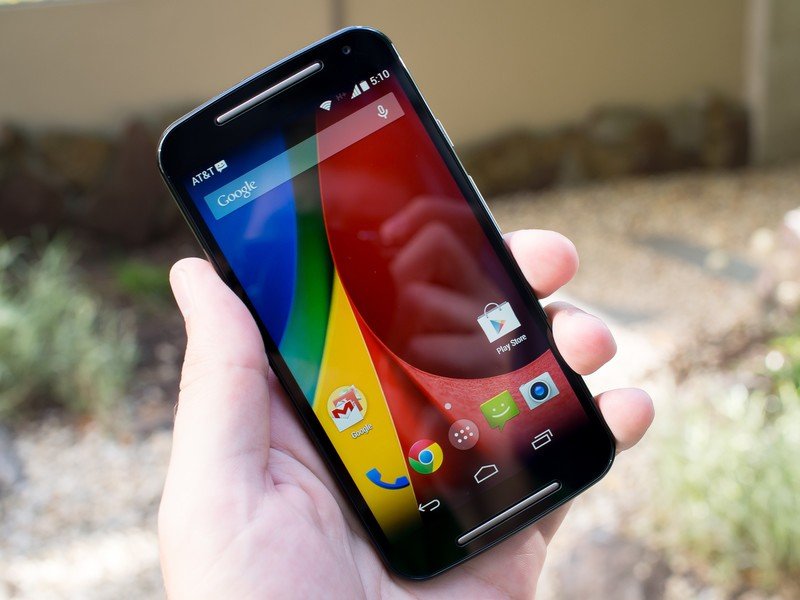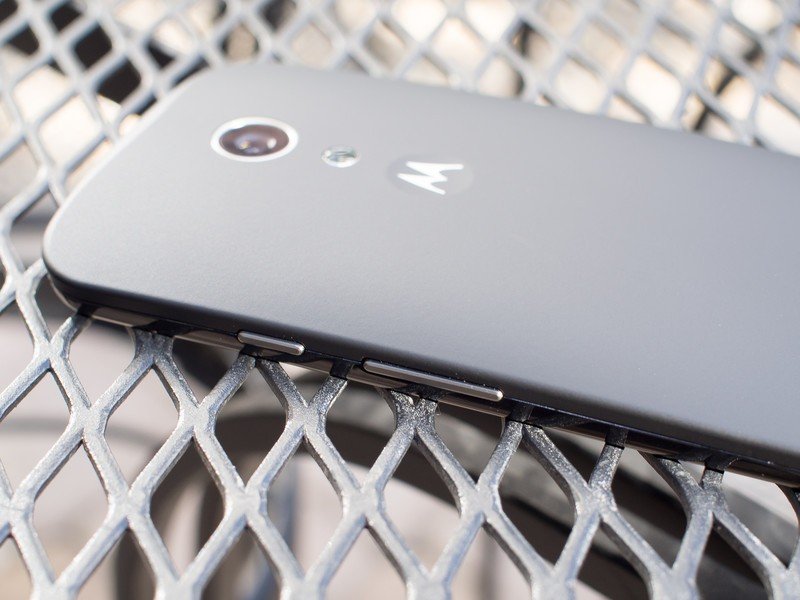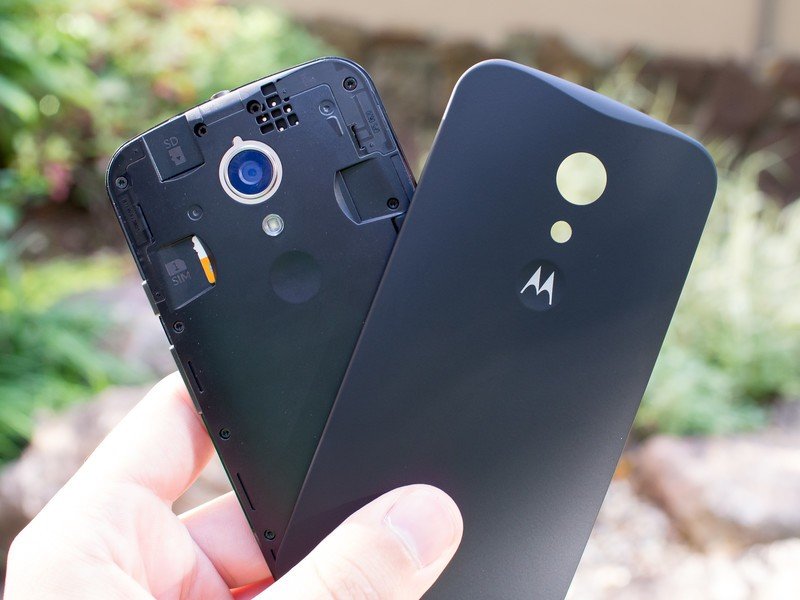Since Motorola was purchased by Google the Moto X has been the headline grabber for the company. But in the background, it's the lower-end Moto G that has been pushing Motorola back into relevance in several countries around the world. India and Brazil, in particular, have been the huge growth markets for Motorola primarily because of the fantastic value that the Moto G represents. A year after the release of the original Moto G that saw so much success, Motorola isn't messing with a good thing.
The new Moto G, as it's called, is nearly identical to the original with just a few key improvements in areas that Motorola's customers said they wanted to see changes. The result is a phone that sticks to the same wonderful $179 unlocked price, but with a larger screen, improved camera, new front-facing speakers and an SD card slot that comes standard.
It all comes back to the idea of riding the momentum from the original G, and that's certainly what Motorola has done here. It's taken a winning recipe that has propelled the company back into the minds of consumers in at least one price bracket, and the new Moto G is set to continue on that path. Read along for our full review of the second generation Moto G.
About this review
We're writing this review after two weeks using the U.S. model of the new Moto G on the AT&T network, primarily in the Seattle area. We have the black version of the device here, along with the blue Flip Shell (sold by Motorola). Though the phone doesn't support LTE, we of course saw ubiquitous HSPA+ coverage from AT&T the entire length of the review.
Motorola also offers a "global" version of the phone (and a dual-SIM variant), but it shouldn't have any notable differences other than its networking hardware.
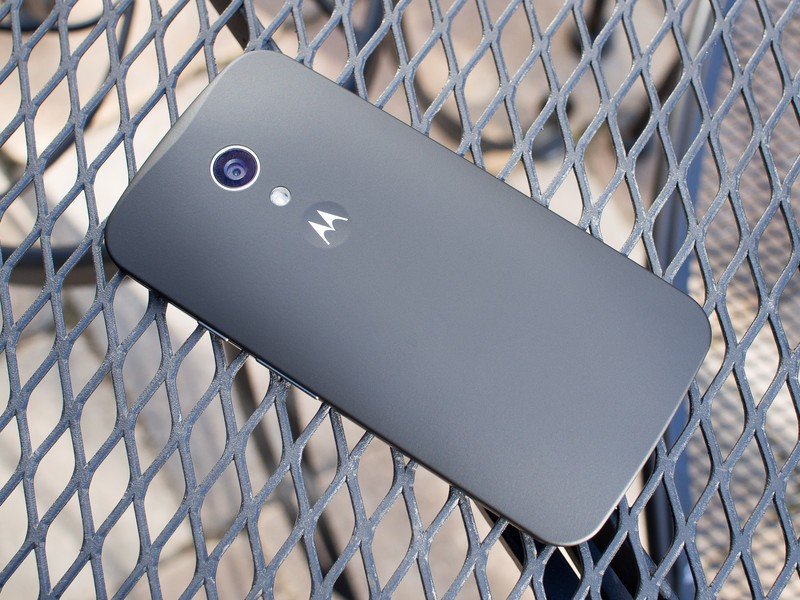
Moto G hardware and specs
Mostly the same, with just the right tweaks
If you've ever seen or held the original Moto G, you're not far off from knowing what the new Moto G feels like. The biggest physical change is a move to a larger chassis to support a full 5-inch display, up from the previous 4.5 inches, with only minor physical changes beyond that. It loses the speaker grille left of the camera on the back, replaced by a pair of speakers on the front of the new Moto G that offer a louder and richer audio experience. The back plate also picks up a slightly more textured feel, as well as a more pronounced "dimple" in the back housing a silver Motorola logo.
Get the latest news from Android Central, your trusted companion in the world of Android
But we're really stretching here to find noticeable differences. It's fitting that the new Moto G has the same name as the old one — this is basically the same phone. And that goes under the external plastic as well, where we're looking at the same internals as the 2013 model. That means a Snapdragon 400 processor, 1GB of RAM, 8GB of storage, 720x1280 screen resolution (good for 294 ppi at 5-inches), just HSPA+ data connectivity and the same 2070mAh battery.
The phone feels just fine in the hand, though it's a bit on the large side (141.5 x 70.7 x 11mm) when compared to phones with the same or even slightly larger screens. It has pretty hefty bezels all around, and particularly on the top and bottom for the new speakers. It's physically larger than the Nexus 5 and even the new Moto X, which is quite surprising considering the difference in screen sizes. And though it is generally attractive to look at, It isn't going to win any hearts and minds as a brilliantly designed phone.
There's nothing inspiring about the design, but at least it feels nice
And of course if you're not completely stricken by the design out of the box, Motorola will be happy to sell you a Moto G Shell or Flip Shell — each coming in a variety of bright and fun colors. The Grip Shell is gone this time around, but the regular and flip varieties are a great way to make your Moto G stand out from the crowd for $15 and $30 each, respectively.
The two notable differences in terms of specs this time around are the bump to an 8MP camera on the back (from 5MP) and the inclusion of an SD card slot in the base model. We'll get to the camera in a bit, but having an SD card slot under the back cover is a big deal for many budget-minded buyers out there. They want the cheap starting price for the phone with low internal storage, and the ability to add more storage at a later date for a few dollars extra.
If you'll recall back to the previous generation Moto G, you had to wait several months and pony up an extra $40 to get a model with an SDcard slot (well, and LTE) — now you're getting the option to expand on the measly 8GB of internal storage right out of the box.
The one big change that you can't see is the Moto G has added a so-called "splash resistant" coating to keep it safe from the occasional run-in with liquids. Motorola isn't even putting an IP rating on the Moto G, but the fact that it can take on water at any level more than "none" is a big plus.
Not including LTE is borderline inexcusable at this point.
Though the hardware changes are subtle this time around, it's hard to fault Motorola for any of its decisions considering that the new Moto G costs the same as the previous one — a startling $179 unlocked. The one thing that's leaning on inexcusable for a device released in September 2014 is the lack of LTE, particularly as Motorola sells the device in markets (such as the U.S. and Western Europe) that have ubiquitous LTE coverage. But beyond that there's not a whole lot to complain about for a device in this price class.
Moto G (2014) specs{.cta}

Moto G display and speakers
You wanted bigger, they gave you bigger
We've seen it time and time again — people just want bigger screens on their phones. While I and many others were just happy with the 4.5-inch Moto G and 4.7-inch Moto X of last year, Motorola has bumped things up by half an inch on both models to follow consumer demand. The new Moto G has a full 5-inch display now, donning the same 720x1280 resolution and IPS LCD technology as the previous version.
The display is bright and accurate, with an acceptable resolution.
The screen looks quite good, and doesn't suffer from the color issues that some low-end AMOLED panels can though it does skew a bit to the warm side of the color spectrum. It's bright and relatively crisp, but clearly comes up short of other high-end LCD panels that really make you say "wow." This resolution at 5 inches is good for 294 ppi, and while it isn't bad in regular use, when you get the phone close to your face or spend time reading dark text on light backgrounds you do notice some jagged edges and grit to fine lines. That's acceptable for most people as a tradeoff for having a physically larger display, though, and we can't honestly expect a 1080p display at this price.
Motorola dumped the small mono speaker on the back of the previous Moto G and replaced it with a pair of front-facing speakers, capitalizing on the expanded use of phones as all-around media players. The Moto G won't be challenging the One M8 and its BoomSound speakers by any means, but compared to your average single small speaker on any other phone it gets quite loud.
You'll of course want headphones for improved listening, or a Bluetooth speaker when you have a lot of people in the room, but for random podcasts here and there or short YouTube videos the Moto G's sound experience is dramatically improved. The combination of a front-facing speaker arrangement and having two distinct speakers really combines to give a better experience than you're used to on most phones.
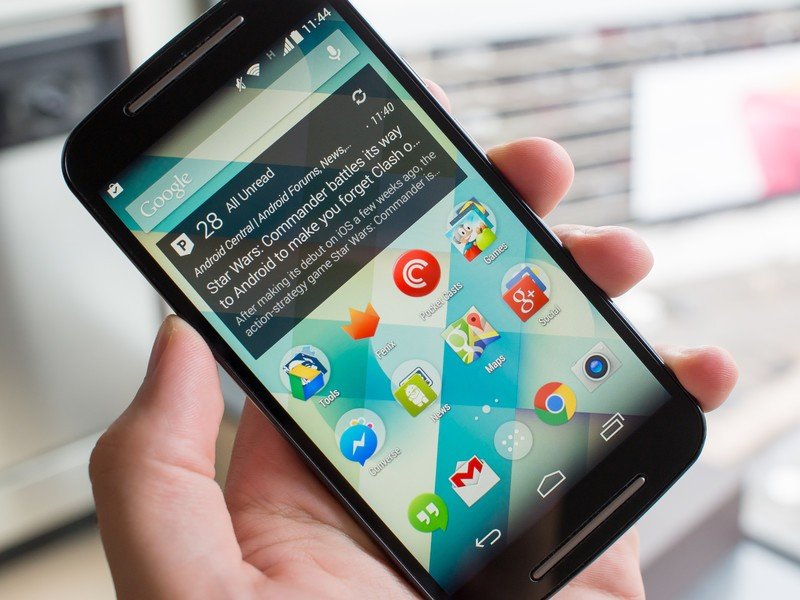
Software and performance
The best you can do with this hardware
Motorola has done a good job keeping things minimal on its devices, and considering the hardware constraints on the Moto G it's cleaned things up even more than usual. Starting with a base of Android 4.4.4, Motorola has kept things very basic. At the time of writing the Moto G doesn't even ship with the Google Now Launcher as default (but it can be installed) like the Moto X, instead going with Moto's own stock-like experience, and includes just a handful of user-facing tweaks and apps.
You get a small taste of Motorola software, but this definitely isn't a Moto X.
You'll be getting Moto Alert, Assist, Connect, Help and Migrate pre-installed, as well as an FM Radio (also a big deal in many places where the G is popular), but beyond that there's not much to write home about. Motorola's included Trusted Bluetooth — that keeps your phone unlocked when it's connected to a "trusted" device — but you won't be getting any active notifications, gestures or always-on listening like you would on the more expensive Moto X.






But that's alright, because the Moto G's hardware honestly can't handle much more than what's on there right now. Motorola has stuck with the same processor, RAM and screen resolution again with the Moto G, but the demands of users and apps have only increased since 2013. That means that even with the streamlined software experience, you're going to notice slowdowns in your daily use of the device.
These are 2013 specs in a 2014 phone — there will be slowdowns.
There are many times when you'll almost be fooled into thinking that the Moto G costs twice as much as it does with how well it handles multitasking and intensive apps, but then you'll find the occasional hiccup closing an app because of the CPU, stuttery animation from the GPU or a reloading webpage that was lost because of a lack of RAM. Motorola has squeezed every bit of performance out of the available hardware, it seems, but in the end these are 2013 parts in a 2014 phone.
The new Moto G performs better than just about anything else you can buy for roughly $200 unlocked — and looks good doing it — but don't buy it expecting the performance to best even a mid-range device that costs $350 or more unlocked.
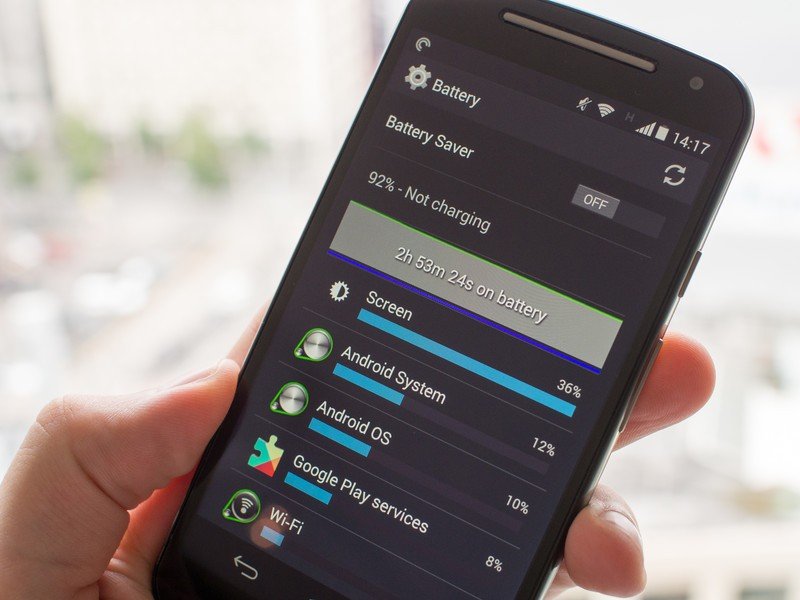
Moto G battery life
Just enough for one day
Sticking with the same 2070mAh battery from the original, the new Moto G dips some in battery life considering it now has a larger 5-inch display to light up and (to a lesser extent) dual speakers to drive. Attempting to use the Moto G the same as I do my other devices (which admittedly is tough given its constrained resources), I found the battery longevity to be questionable.
A relatively heavy day out on mobile data taking pictures, keeping up to date with email, refreshing social networks, running my connected LG G Watch and keeping the screen brightness up had the Moto G hitting the 10 percent mark at just over 11 hours (2.5 hours screen on). That's not all that great, but isn't in any way surprising considering the relatively small battery for a device this large. It's also not unexpected that my usage — usually handled by a higher-end device — was extra taxing on something lower-end like the Moto G.
Motorola includes a "Battery Saver" switch in the settings, but it doesn't go all that far to help you out — it simply restricts background data for apps when the Moto G's battery gets low.
In a more typical use-case the Moto G can easily make it through the day, though don't expect it to be a battery life king and go a full 20 hours on a regular basis without serious shaping of how you use the phone. There are some mid-range phones out there that put battery life as a priority and pack huge cells into devices with huge screens, but the Moto G gets away with just adequate battery here. Maybe you'll want to invest in one of Motorola's snazzy new Power Pack Micros, just in case.
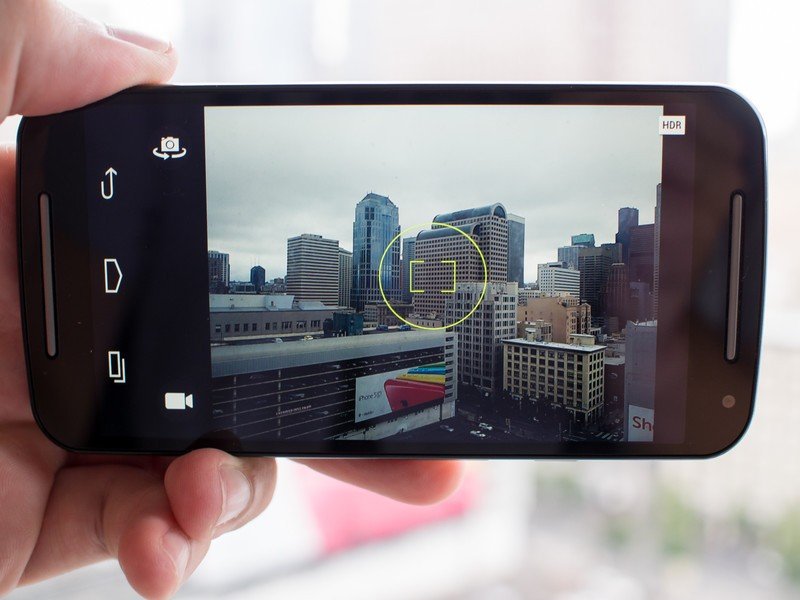
Moto G cameras
Same basic setup, now with more megapixels
Motorola focused on boosting the megapixel count of the Moto G's cameras in this 2014 refresh, going to 8MP on the back and 2MP up front from a previous 5MP and 1.2MP on the original. While you'll notice the increased resolution on the primary camera, the best I can say about its performance is that it's ... basic.
The same basic camera setup, now with more resolution to work with.
You're getting more resolution to work with, which is nice, but Motorola's very plain camera interface paired with a basic camera sensor isn't going to ever produce spectacular results. I found leaving the Moto G in HDR Auto mode (letting the camera choose when to use HDR), along with using the manual tap-to-focus-and-meter to produce the best possible images, but still wasn't blown away.
With HDR on in the daytime you could get some solid shots (although it may take a few tries), but where the Moto G really falls down is in low light shots or shots that require a wide dynamic range to properly capture both the highs and the lows. In many cases the Moto G seems to just boost the ISO to lighten dark areas, causing lots of noise. On the other end, it sometimes just locks onto the lighter portion of the scene and makes the entire shot too dark — something only mildly remedied by using tap-to-focus for a specific spot.

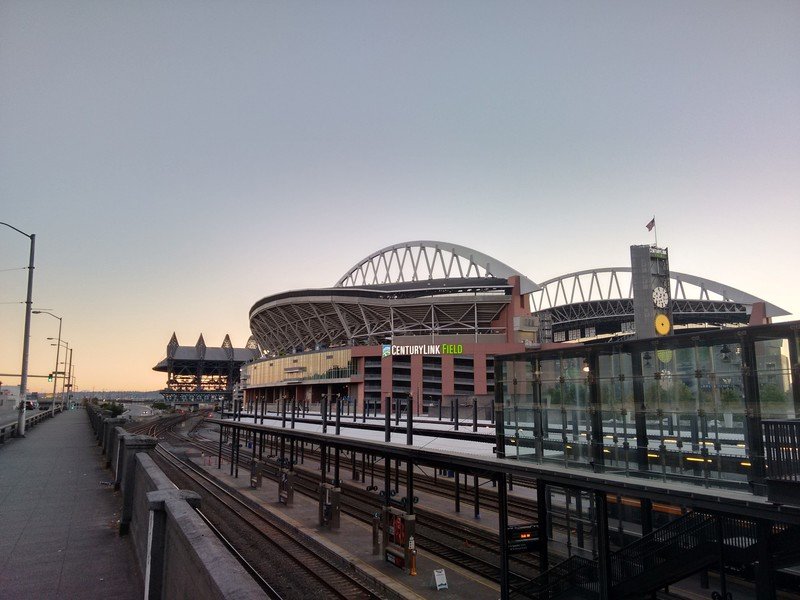






I was able to get some solid pictures if the conditions were right, and in any case I was able to get pictures that were more than acceptable for posting to social media sites or showing to friends on the phone itself. That's the Moto G's goal, and it accomplishes it well — just don't expect to blow up and frame any pictures from this one.
On the front-facing camera side of things, I can basically say that there's a camera there and it works. Motorola has upped things to 2MP for a bit more resolution, but if you're taking a bunch of selfies you're probably not one to be concerned with image quality in general. Turn around the phone and use the rear camera if at all possible, though.
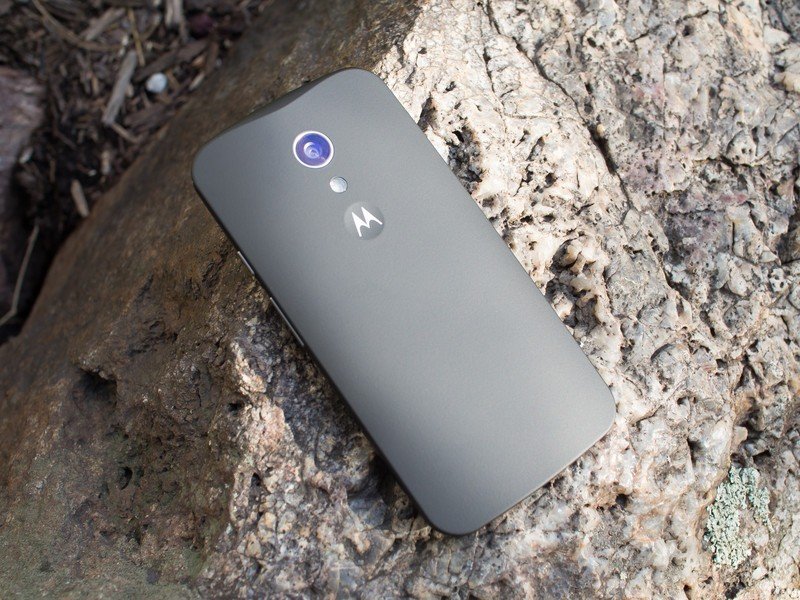
Second-generation Moto G: The Bottom Line
Moto updates its best-selling smartphone just enough ...
With the new Moto G, Motorola took the best low-cost unlocked phone option from 2013 and made it slightly better, while keeping the price the same. For the industry-leading $179 unlocked you're getting just modest hardware internals, but a big screen, loud speakers, improved camera, an SDcard slot and the ability to customize later with different shell accessories. You miss out on LTE and fancy software features, of course, but few people are likely to complain about those shortcomings at this price.
The new Moto G isn't going to win any design awards or go toe-to-toe on performance with devices twice its price, but it still absolutely crushes anything else in its price class by most any metric you measure. It isn't going to replace the 2013 flagship you have in your pocket right now (or even one from 2012, honestly), but if you need a backup phone or a device for someone who is on a budget and less demanding of their smartphone, the Moto G should absolutely be there near the top of your list.

Andrew was an Executive Editor, U.S. at Android Central between 2012 and 2020.
